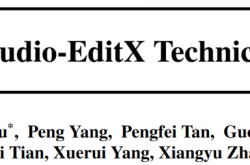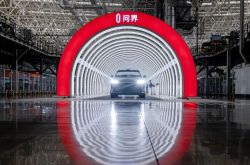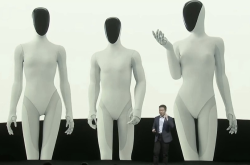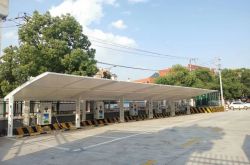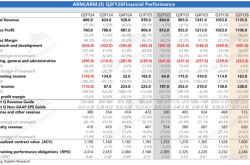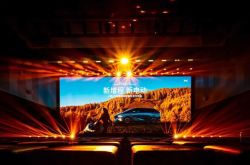Is Autonomous Driving Overhyped, Leading to Disappointing Real-World Experiences?
![]() 12/30 2024
12/30 2024
![]() 679
679
As the "fourth revolution" in the automotive industry, autonomous driving has emerged as a trend pursued by major automakers, technology companies, and investors alike. From flashy slogans to omnipresent advertisements, this technology race with a future-oriented blueprint has captured the attention of countless eyes. However, when consumers engage with so-called "autonomous driving," many are left feeling disappointed. The futuristic promises often fail to materialize in practical use. Why is autonomous driving so hyped up, yet the actual experience falls short?
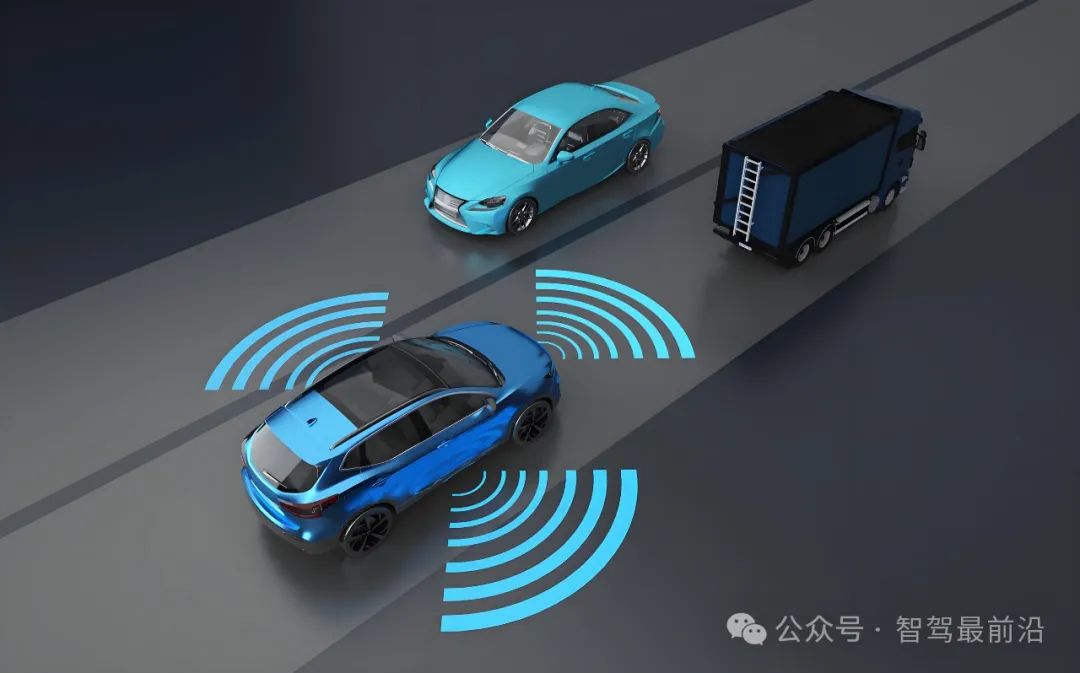

Current Status of Autonomous Driving Technology: Still Stuck in the "Semi-Automatic" Midfield
Despite being a buzzword in manufacturer promotions, autonomous driving technology is still in an experimental phase. Most vehicles currently on the market are equipped with advanced driver assistance systems (ADAS) rather than true "autonomous driving." According to the Society of Automotive Engineers (SAE), there are six levels of autonomy, ranging from L0 to L5. Currently, mass-produced models generally fall under L2 or L2+, where drivers must remain attentive and ready to take control at any time. True L4 and L5 fully autonomous driving remain largely confined to the laboratory, with widespread application still far off.
1. Perception Capabilities: Bottlenecks in Hardware and Algorithms
The perception layer of autonomous driving serves as the foundation of the system, tasked with constructing a "digital twin" of the vehicle's surroundings through sensors. Currently, solutions typically combine LiDAR, millimeter-wave radar, cameras, and high-precision maps. However, perception hardware and algorithms face several challenges:
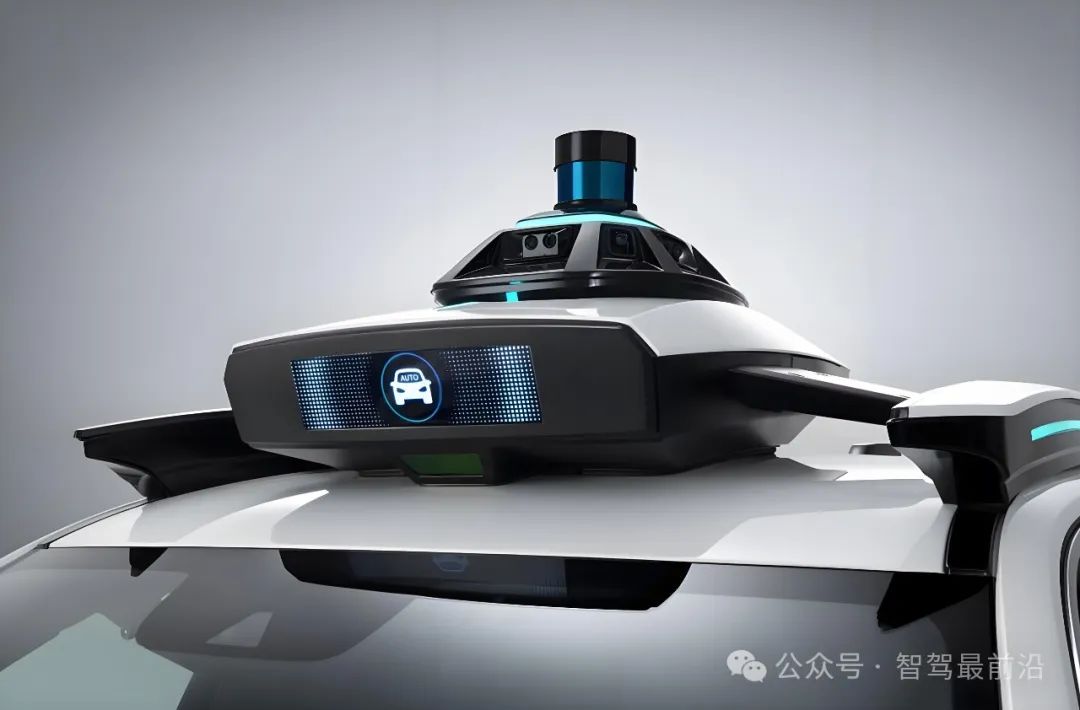
1. Complex Scene Recognition: In extreme weather like night, rain, snow, or heavy fog, LiDAR and cameras can be significantly impacted, potentially leading to sensor failure or misjudgment. Under strong light interference, cameras may fail to distinguish road signs, and snow or rain can hinder LiDAR's ability to capture object shapes and distances.
2. Data Fusion and Processing Difficulty: Real-time fusion of data from different sensors is crucial for accurate environmental perception. However, data from various sources may have delays, errors, or conflicts, posing significant challenges to algorithms.
3. Perception Blind Spots: Existing hardware layouts struggle to cover all vehicle surroundings, leading to persistent "blind spots."
2. Decision-Making and Planning: Immature Algorithms in Complex Environments
Based on perception data, autonomous driving selects optimal driving paths through decision-making and planning algorithms. This process is incredibly complex, especially on open roads or city streets, where vehicles must process numerous real-time variables like dynamic traffic, pedestrians, complex signs, and sudden hazards.
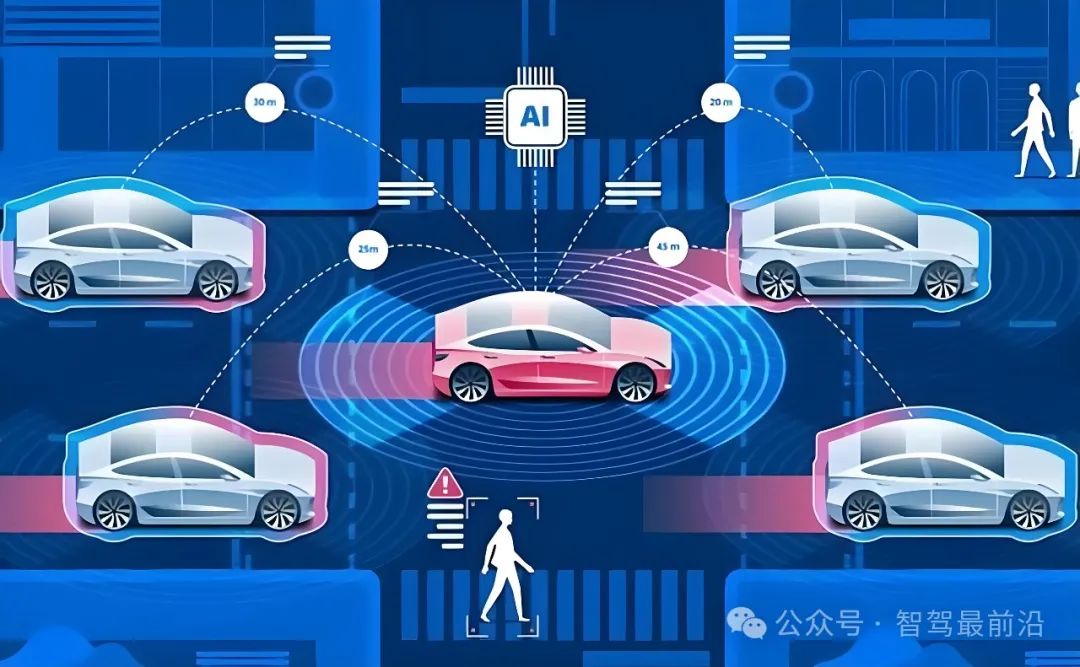
1. Prediction Difficulty: Autonomous systems must predict surrounding vehicle and pedestrian behavior, but human driving is often unpredictable. Sudden jaywalking or wrong-way cycling can confuse autonomous systems.
2. Balancing Conservatism and Aggressiveness: Most autonomous algorithms adopt a "conservative" approach, preferring to slow down or stop in uncertain situations. While this enhances safety, it can lead to "decision dilemmas" like stalemates with oncoming traffic, causing congestion.
3. Handling Extreme Situations: Algorithms still lack the ability to manage extreme conditions like high-speed tire blowouts, sudden crosswinds, or falling objects. This limitation affects system reliability and is a significant industry bottleneck.
3. Computational Power: High Demand and Cost Constraints
Autonomous systems require real-time data processing for perception, decision-making, planning, and control, demanding substantial computational power. Many vehicles now use domain controllers and dedicated autonomous driving chips from brands like NVIDIA's Orin or Qualcomm's Snapdragon Ride. However, even these high-performance chips struggle with the complex demands of all scenarios.
Increased computational power raises costs, a significant obstacle for industry development. Autonomous vehicle computing hardware can cost thousands of dollars, and reducing costs while maintaining performance is a long-term challenge for automakers and supply chains.
4. High-Precision Maps and Positioning: Dynamic Updates and Insufficient Infrastructure
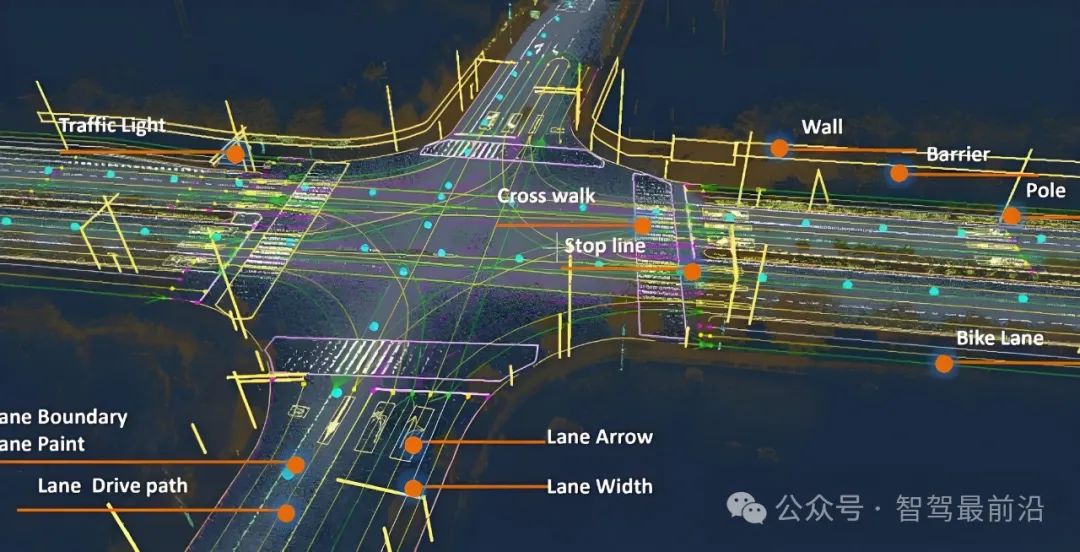
High-precision maps are vital for autonomous navigation but face dynamic and reliability challenges. Most maps rely on static data and struggle to reflect real-time information like road construction or accidents. Real-time updates require robust cloud support and communication networks (like V2X), but current infrastructure is insufficient for large-scale deployment. Many companies adopt a "light map, heavy perception" approach, but high-precision maps remain crucial and difficult to abandon.
Regarding positioning, while GPS combined with inertial navigation provides accurate services, errors in high-rise urban areas or sheltered environments like tunnels can directly affect vehicle safety and driving paths.
5. Safety Issues: Insufficient System Redundancy and Fault Handling
One of autonomous driving's core challenges is ensuring safe operation under extreme conditions. Though many automakers have introduced sensor redundancy (like combining LiDAR and millimeter-wave radar), system-level redundancy and fault handling are not yet truly reliable. The ability to quickly take over and avoid accidents in sensor failure or algorithm errors is a pressing issue. Accidents caused by system misjudgments, as reported by Tesla, show that system safety has not yet met consumer expectations.
In summary, autonomous driving technology is in a state of "continuous breakthroughs, difficult landings." While significant progress has been made in perception, decision-making, and computation, there's still a huge gap between current technology and true "unmanned" autonomous driving across all scenarios. This gap reflects both the necessary path of technological development and the industry's need to reflect on excessive promotion and consumer expectation management.

Market Hype Bubble: Short-Sighted Profit-Seeking Driven by Capital
As a representative of emerging technology, autonomous driving has long been a "star racecourse" for the capital market. Amid the automotive industry's transformation, various enterprises and investors have rushed in, aiming to secure a place in the future smart mobility market. However, this competition is marked by excessive promotion, short-sighted profit-seeking, concept-first approaches, and irregularities. The industry bubble driven by capital is quietly inflating, delaying autonomous driving implementation and eroding market trust.

1. Concept-First: Hype Replaces Technology's Core Position
In the autonomous driving race, many companies choose to attract attention through "storytelling." Some automakers and tech firms overstate their capabilities, portraying decades-away goals as imminent. Many promote L2-level ADAS as "autonomous driving" or "semi-autonomous," misleading consumers into thinking their products offer highly intelligent driving.
False technical claims are common. Some use animated simulations or edited videos to showcase autonomous performance in complex scenarios, often test results in specific conditions rather than real-world capabilities. Consumers are drawn to such promises but often feel disappointed, leading to industry distrust.
This "concept-first" hype drains consumer trust and fosters impatience in technological development. Companies invest more in marketing than R&D, leading to an increasing trend of "emphasizing concepts over technology."
2. Capital Profit-Seeking: Short-Termization of Technological Progress
The capital market's high interest in autonomous driving has made it a prime story for corporate financing and listing. Some companies attract massive capital by setting unrealistic market and technological expectations, often overlooking the technology's complexity and long-term nature.
1. Excessive Financial Goals Pressure Technology Implementation: Companies promise goals like "mass-producing L4 autonomous driving within a few years" or "capturing 30% market share" during financing. These unrealistic promises push R&D teams to pursue short-term results, ignoring the long cycles and high investments required.
2. Investment Overheat Creates Bubbles: As capital floods in, autonomous driving valuations soar. Some companies achieve ultra-high valuations based on the "autonomous driving" concept alone, without mature products or profitability. This creates a false market prosperity but hides severe resource misallocation issues. Many startups rely excessively on capital and face trouble or even bankruptcy when technological breakthroughs or market returns are delayed.
3. Short-Term Strategies of Industry Giants: Even giants adopt short-term strategies under capital pressure. To achieve quick returns, some automakers launch "quasi-autonomous" products before technology maturity, capturing the market with new models rather than waiting for refinement. This behavior damages corporate reputation and further erodes consumer trust.
3. High Consumer Expectations and Corporate "Over-Promises"
Capital's profit-seeking behavior creates another problem: companies continuously set false high expectations to attract investment and consumers. These "over-promises" create a huge psychological gap between consumer expectations and real-world experiences.
In promotions, autonomous driving is often described as "hands-free and carefree." However, in practice, consumers find they must "monitor the vehicle throughout the journey and be ready to take over at any time." Some promised functions are limited to ideal scenarios like highway driving in good weather, making them nearly unusable in daily complex road conditions.
Creating high expectations damages the consumer experience and puts the industry under public scrutiny. Once consumers realize the discrepancy between promotion and reality, distrust spreads rapidly, and repairing this trust becomes extremely difficult.
4. Lagging Policies and Regulation: Further Inflating the Bubble
Under the dual pressures of capital drive and market demand, companies that "sprint" ahead in the industry often overlook policy and safety boundaries. Some companies rush to market autonomous driving features before the technology is sufficiently safe, in a bid to seize market opportunities. This not only exacerbates consumer dissatisfaction but also fuels controversy over the safety and social acceptance of autonomous driving technology.
The lag in policies and regulations also presents opportunities for companies. In certain countries and regions, the definition of "autonomous driving" remains unclear, allowing firms to exploit ambiguous regulatory loopholes, exaggerate their technological capabilities in promotions, and create additional market bubbles. When autonomous driving features come under scrutiny due to safety incidents or technical flaws, regulatory bodies often struggle to intervene promptly, further exacerbating unhealthy practices within the industry.
5. Vicious Cycle of Eroding Industry Trust
The shortsighted pursuit of profit driven by capital not only hinders the healthy development of technology but also tarnishes the industry's reputation. The disparity between overhyped promotions and actual user experiences gradually diminishes consumer expectations for autonomous driving, leading to widespread distrust. This disappointment also impacts genuinely capable companies in the market, making it challenging for them to receive fair evaluations.
The negative consequences of eroding trust are already evident. Some consumers feel disappointed or even angry about the autonomous driving feature after purchasing it due to a poor experience or accidents. This not only hampers the market performance of related brands but also faces increased resistance in promoting autonomous driving technology as a whole.
6. Reflection from the Bubble: Returning to the Essence of Technology and User Needs
Capital is not entirely futile; it has injected immense momentum into the development of autonomous driving technology and spurred industry competition and technological innovation. However, when capital over-intervenes and quick success becomes the norm, the balance of industry development is disrupted. To truly achieve breakthroughs in autonomous driving technology and gain consumer recognition, the industry needs to reflect on the bubble, return to the essence of technology, and focus on users' actual needs and experiences.
The future of the industry lies not in "telling a good story" but in "making a good product." Only by shifting from excessive hype to solid technological accumulation can autonomous driving transition from a frenzy of capital to genuine implementation and prosperity.

The Gap Between Consumer Expectations and Actual Experiences
Autonomous driving technology has been bestowed with boundless imagination in marketing, with slogans such as "liberating your hands," "completely eliminating driving fatigue," and "the era of driverless cars is coming" serving as pivotal selling points to captivate consumer attention. However, reality falls far short of consumer expectations. To cater to market demand, companies deliberately obscure the true capabilities of their technology in promotions, misleading consumers who are easily swayed by these "glorious visions." Ultimately, this vast disparity in expectations creates a significant psychological rift for consumers towards autonomous driving technology, even fostering widespread distrust.

1. Idealized Promotional Imagery: Consumers' Idealized Expectations
The popularization of autonomous driving technology commenced with widespread promotions by automakers and technology companies, painting a picturesque vision of intelligent travel. In this utopia, consumers can relax in the car and enjoy an intelligent driving experience akin to a science fiction movie:
• Fully Liberated Hands: Consumers need not touch the steering wheel or press the gas and brake pedals; the vehicle navigates freely under various road conditions.
• Safety Beyond Human Driving: Thanks to high-precision sensors and AI algorithms, autonomous vehicles detect dangers imperceptible to humans, dramatically reducing traffic accidents.
• All-Weather Convenience: Whether for commuting, long-distance travel, or navigating complex urban roads, autonomous vehicles handle it all, becoming true personal chauffeurs.
These visions are undeniably enticing, yet companies overlook a crucial fact in their promotions: the evolution of autonomous driving technology requires time, and current technological capabilities are far from supporting such a vision.
2. The Cruel Reality of Actual Experiences: Consumers' Sense of Disparity
When consumers purchase autonomous driving features with high expectations, the actual experience starkly contrasts with the promotions.
1. Limited Functionality
Currently, mainstream autonomous driving features predominantly reside at the L2 or L2+ level, technically still categorized under Advanced Driver Assistance Systems (ADAS) rather than true "autonomous driving." Vehicles can only engage autonomous driving functions under specific conditions (e.g., highways, favorable weather) and still necessitate driver intervention in complex scenarios (e.g., urban areas, night, rain, or snow). Even in targeted situations, autonomous driving features often perform unsatisfactorily. Vehicles might fail to accurately recognize road markings, pedestrians, or intricate traffic signals, leading to a bumpy driving experience or even safety hazards.
2. The Burden of Continuous Monitoring
Despite promotions emphasizing "liberated hands," the actual experience demands drivers to remain vigilant and prepared to take over at any moment. This state increases drivers' psychological burden as they must not only monitor the vehicle's driving status but also swiftly respond to potential emergencies. This experience contradicts the vision of "effortless travel."
3. Discomfort Caused by Immature Technology
Autonomous driving technology often exposes issues of "insufficient intelligence" in practical use. In complex road environments, vehicles may experience frequent hard braking or abrupt lane changes, making passengers uneasy. The system's obstacle recognition is also prone to errors, such as mistaking shadows for solid objects, causing unnecessary deceleration or stopping. In navigation and path planning, autonomous vehicles' choices frequently diverge from human drivers' intuition, resulting in a stiff and unnatural driving experience.
4. Insufficient Practical Value of Features
Consumers pay a premium for autonomous driving features but find them impractical. Some features are usable only in limited circumstances, failing to cover most scenarios of consumers' daily travel. Moreover, autonomous driving systems are inefficient and sometimes inferior to human drivers. For instance, in urban roads with traffic congestion, autonomous vehicles may appear "overly cautious," leading to inefficiency.
3. The Root of the Gap: Companies' "Overpromising"
The disparity between consumer expectations and actual experiences stems from companies' "overpromising" in promotions. This behavior not only misleads consumers but also sows the seeds of a trust crisis.
1. Blurring Technological Boundaries
Many automakers deliberately blur the distinction between driving assistance and autonomous driving in promotions, packaging L2-level features as L3 or higher capabilities. Without fully grasping technological limitations, consumers often overestimate vehicles' intelligence, leading to excessively high expectations.
2. Overemphasizing Technological Highlights
Companies tend to showcase autonomous driving features' "highlight moments" in promotions while avoiding discussions of their limitations and shortcomings. Some manufacturers showcase vehicles navigating complex road conditions effortlessly in advertisements, but these scenes are meticulously orchestrated under specific conditions and not universally representative.
3. Lack of Transparent Information Disclosure
Many automakers fail to fully explain the usage conditions and limitations of autonomous driving features during sales. Some consumers discover post-purchase that these features are applicable only in a handful of scenarios, exacerbating the psychological rift due to "mismatched products."
4. Consumer Dissatisfaction and Trust Crisis
When consumers' expectations repeatedly go unfulfilled, their dissatisfaction swiftly accumulates and spreads. As an emerging field, autonomous driving technology should earn market trust through technological progress. However, reality shows that due to overpromotion and misleading functionality, the industry as a whole is grappling with a severe trust crisis.
1. Distrust of Technology
Consumers begin to question automakers' autonomous driving features and are even reluctant to try new technologies. This lack of trust may directly impact the industry's technology promotion and market acceptance.
2. Safety Concerns
Consumer disappointment extends beyond the experience gap to safety concerns. Autonomous driving technology has always been a hot topic, and when autonomous systems make misjudgments or fail to handle complex scenarios, it often garners significant attention. Consumers may perceive significant hidden dangers in this technology, refusing to use or purchase related products.
3. Overall Dislike of the Industry
The trust crisis in autonomous driving also tarnishes the entire automotive industry, as consumers may believe all automakers are exaggerating, leading to a rejection of intelligent driving technology as a whole. This also complicates autonomous driving technology's path to earning consumer trust and technological implementation.
5. The Solution: Bridging Consumers' Psychological Gap
To narrow the gap between consumer expectations and actual experiences, companies need to fundamentally adjust their strategies.
1. Truthful and Transparent Promotions
Companies should truthfully disclose the actual capabilities and limitations of autonomous driving features, avoiding exaggerated promotions to lure consumers. Only by letting consumers clearly understand the technology's current state can we prevent unmet expectations.
2. Focusing on User Experience
In technology research and development, companies should prioritize users' actual needs and usage scenarios rather than merely pursuing flashy technology. Truly addressing users' pain points can earn market recognition.
3. Gradually Advancing Technological Iteration
Autonomous driving technology necessitates long-term accumulation and refinement. Companies should focus on enhancing fundamental capabilities and gradually introduce features while ensuring safety, avoiding the rush to seize market opportunities.
4. Strengthening Education and Communication
Companies should leverage promotions and education to give consumers a clearer understanding of autonomous driving technology. For instance, clearly distinguishing between driving assistance and autonomous driving helps consumers correctly comprehend technological capabilities and usage methods.
Only by being grounded and narrowing the gap between expectations and reality can autonomous driving technology truly earn consumers' trust and favor.

Hidden Concerns in the Industry Ecosystem: Lack of Standards and Collaboration
As a technology-intensive and capital-intensive innovation field, the development of autonomous driving cannot be divorced from the concerted efforts of the industry ecosystem. However, beneath the veneer of prosperity, hidden concerns within the industry ecosystem are gradually surfacing. The absence of unified technical standards, inadequate collaboration mechanisms, and the struggle for interests among various parties are becoming significant obstacles impeding the development of the autonomous driving industry. This disorderly competition not only weakens the industry's overall efficiency but may also lead to stagnation or even regression in technological advancement.
1. Lack of Technical Standards: The Root of Industry Fragmentation
Autonomous driving technology encompasses numerous critical links, including perception, decision-making, control, communication, and other domains, requiring deep involvement from diverse enterprises and industries. However, one of the most pressing issues confronting the current industry development is the lack of unified technical standards and norms.
1. Inconsistent Hardware Standards
The technological routes for autonomous driving perception hardware (such as LiDAR, cameras, and millimeter-wave radars) are diverse, with different enterprises opting for varying hardware configurations and parameters. LiDAR manufacturers adhere to their standards for wavelength, detection distance, field of view, etc., leading to insufficient compatibility among downstream algorithms. Camera solutions lack universal standards for resolution, photosensitivity, and transmission interfaces, necessitating enterprises to invest additional resources in compatible development. The inconsistency in hardware standards not only increases communication costs between vehicle manufacturers and suppliers but also complicates the large-scale application of autonomous driving solutions.
2. Fragmented Software Ecosystem
There are also notable differences in the operating systems, algorithm frameworks, data formats, and other aspects used in autonomous driving systems. Different enterprises adopt independently developed algorithm architectures, resulting in poor data interoperability and high migration costs for algorithms. Discrepancies in data collection and processing formats prevent the industry from forming a shared data pool, impeding the rapid iteration and optimization of autonomous driving models. The fragmented software ecosystem also hampers efficient technological cooperation, slowing down the development pace of the entire industry due to the lack of collaboration.
3. Chaotic Testing and Verification Systems
One of the cornerstones of autonomous driving technology lies in safety, a facet that necessitates stringent testing standards for verification. However, the current system for testing and verification has yet to achieve industry-wide consensus.
Diverse enterprises employ varying definitions and scopes for test scenarios, complicating the establishment of a universal safety evaluation system. In real-world road tests, the absence of unified testing methodologies and data disclosure standards undermines the comparability and credibility of results. This lack of standardization not only fuels consumer doubts about autonomous driving safety but also poses challenges for regulatory bodies in formulating policies.
2. Insufficient Collaboration Mechanisms: The Isolation Dilemma
Beyond the lack of standards, inadequate internal industry collaboration hinders the full realization of autonomous driving technology. Many enterprises are overly self-interested, lacking a collaborative mindset, resulting in widespread resource wastage and redundant research and development efforts.
1. Intensifying Corporate Competition
As a high-value domain, autonomous driving attracts numerous players. However, many enterprises prefer "closed competition," shunning external collaboration through patent barriers and technological secrecy.
Leading enterprises restrict access to core technologies (like high-precision maps and AI algorithms), making it difficult for SMEs to enter the market, thereby preventing the industry from achieving a virtuous cycle. The scramble for resources, such as autonomous driving test roads and key technical talent, further exacerbates internal friction. Under this "zero-sum game" model, while individual enterprises may benefit in the short term, the industry's overall innovation efficiency declines.
2. Poor Cross-Industry Collaboration
The development of autonomous driving necessitates the participation of not just automakers but also multiple stakeholders, including transportation infrastructure providers, communication operators, and government regulatory bodies. However, current cross-industry collaboration mechanisms are flawed.
Limited cooperation exists between communication enterprises and automakers in V2X (Vehicle-to-Everything) technology, slowing the deployment of vehicle-road communication systems. Infrastructure's intelligent transformation lags, such as the construction of smart traffic lights and high-precision positioning base stations, failing to keep pace with autonomous driving advancements. Inadequate communication between the government and enterprises in policy and regulation formulation also creates a disconnect between policies and technological developments. Insufficient collaboration hampers autonomous driving technology's ability to synergize with the external ecosystem, making individual breakthroughs challenging to translate into systemic progress.
3. Supply Chain Instability
Autonomous driving technology relies on a complex supply chain system, yet this system grapples with significant instability. Insufficient supply capacity for core components (e.g., high-performance chips) creates bottlenecks in technological development for many enterprises. The lax collaboration between upstream and downstream enterprises indicates a lack of long-term cooperation plans between automakers and suppliers, with the supply chain unable to support large-scale technological implementation. Without addressing supply chain issues, the commercialization prospects for autonomous driving technology remain elusive.
3. Consequences: Industry Inefficiency and Resource Waste
The industry's current lack of standards and collaboration directly leads to resource wastage and industrial inefficiency. The isolated working model hinders technology sharing, with redundant research and development and inefficient technology utilization becoming commonplace. Without uniform standards, technological levels and product quality vary across enterprises, complicating consumers' judgment of products' actual capabilities. Poor-quality products may even erode consumer trust in the entire industry. The absence of industry standards and collaboration mechanisms also increases policy-making uncertainty for governments, reducing regulatory efficiency.

Conclusion: Transitioning from Gimmicks to Rationality
The dream of autonomous driving is enticing, yet a bridge is needed to connect it to reality. This bridge is not built on overwhelming promotions but rather on solid technological research and development and optimized user experiences. Currently, the autonomous driving industry urgently needs to cool down, with enterprises focusing on grounded technology rather than catering to the whims of capital markets and consumers with a quick-success mindset.
For consumers, it's crucial to rationally view the current status and future of autonomous driving. Rather than being swayed by promotional "future paintings," they should focus on the boundaries and reliability of actual functions. As the industry's boom gradually wanes, it presents an opportunity for autonomous driving to truly mature – transitioning from "gimmicks" to "practicality" and from "future" to "present".
-- END --

